In the broader context of racism against Black Americans and racism in the United States, mass racial violence in the United States consists of ethnic conflicts and race riots, along with such events as:
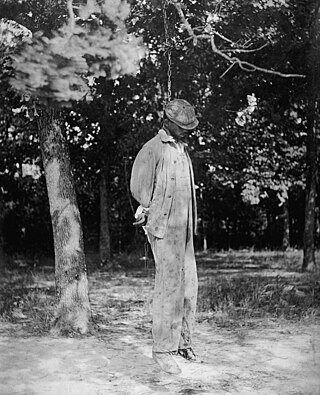
Lynching is an extrajudicial killing by a group. It is most often used to characterize informal public executions by a mob in order to punish an alleged transgressor, punish a convicted transgressor, or intimidate people. It can also be an extreme form of informal group social control, and it is often conducted with the display of a public spectacle for maximum intimidation. Instances of lynchings and similar mob violence can be found in every society.

Livermore is a home rule-class city located at the confluence of the Green and Rough rivers in McLean County in the U.S. state of Kentucky. The population was 1,230 as of the 2020 census, down from 1,365 in 2010. It is included in the Owensboro metropolitan area.

Port Jervis is a city located at the confluence of the Neversink and Delaware rivers in western Orange County, New York, United States, north of the Delaware Water Gap. Its population was 8,775 at the 2020 census. The communities of Deerpark, Huguenot, Sparrowbush, and Greenville are adjacent to Port Jervis. Matamoras, Pennsylvania, is across the river and connected by the Mid-Delaware Bridge. Montague Township, New Jersey, also borders the city. The Tri-States Monument, marking the tripoint between New York, New Jersey, and Pennsylvania, lies at the southwestern corner of the city.

Red Summer was a period in mid-1919 during which white supremacist terrorism and racial riots occurred in more than three dozen cities across the United States, and in one rural county in Arkansas. The term "Red Summer" was coined by civil rights activist and author James Weldon Johnson, who had been employed as a field secretary by the National Association for the Advancement of Colored People (NAACP) since 1916. In 1919, he organized peaceful protests against the racial violence.
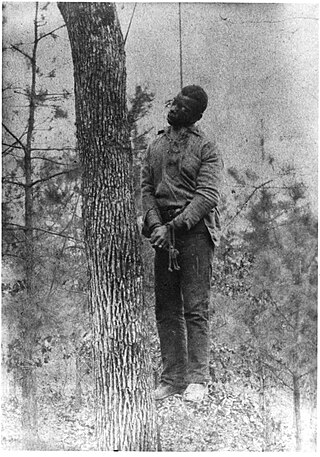
Lynching was the widespread occurrence of extrajudicial killings which began in the United States' pre–Civil War South in the 1830s and ended during the civil rights movement in the 1950s and 1960s. Although the victims of lynchings were members of various ethnicities, after roughly 4 million enslaved African Americans were emancipated, they became the primary targets of white Southerners. Lynchings in the U.S. reached their height from the 1890s to the 1920s, and they primarily victimised ethnic minorities. Most of the lynchings occurred in the American South, as the majority of African Americans lived there, but racially motivated lynchings also occurred in the Midwest and border states.

J. Thomas Shipp and Abraham S. Smith were African-American men who were murdered in a spectacle lynching by a group of thousands on August 7, 1930, in Marion, Indiana. They were taken from jail cells, beaten, and hanged from a tree in the county courthouse square. They had been arrested that night as suspects in a robbery, murder and rape case. A third African-American suspect, 16-year-old James Cameron, had also been arrested and narrowly escaped being killed by the mob; an unknown woman and a local sports hero intervened, and he was returned to jail. Cameron later stated that Shipp and Smith had committed the murder but that he had run away before that event.
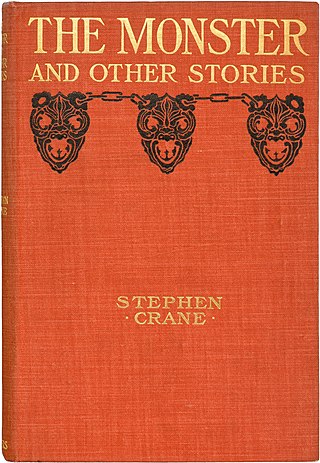
The Monster is an 1898 novella by American author Stephen Crane (1871–1900). The story takes place in the small, fictional town of Whilomville, New York. An African-American coachman named Henry Johnson, who is employed by the town's physician, Dr. Trescott, becomes horribly disfigured after he saves Trescott's son from a fire. When Henry is branded a "monster" by the town's residents, Trescott vows to shelter and care for him, resulting in his family's exclusion from the community. The novella reflects upon the 19th-century social divide and ethnic tensions in America.
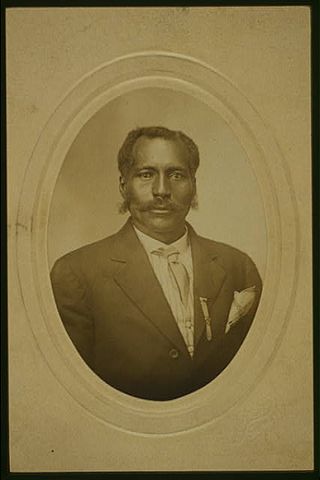
Anthony Crawford was an African American man who was killed by a lynch mob in Abbeville, South Carolina on October 21, 1916.
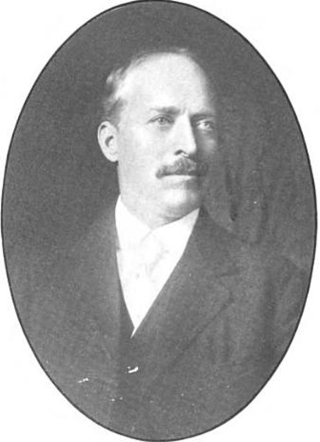
William Howe Crane (1854–1926) was an American lawyer. Born to Reverend Jonathan Townley Crane and Mary Helen Peck Crane, he was the fourth-oldest of nine surviving children—Mary Helen, George Peck, Jonathan Townley, William Howe, Agnes Elizabeth, Edmund Byran, Wilbur Fiske, Luther and Stephen. In 1880 he graduated from Albany Law School, after which he established a practice in Port Jervis, New York. Crane was a prominent member of the community; he served as district clerk of the board of education and treasurer of the town's waterworks. One year he served as special judge for Orange County, which earned him the nickname "Judge" Crane. He was also the author of one book, A Scientific Currency (1910).

John Temple Graves was an American newspaper editor who is best known for being the vice presidential nominee of the Independence Party in the presidential election of 1908.
In the early hours of 3 June 1893, a black day-laborer named Samuel J. Bush was forcibly taken from the Macon County, Illinois, jail and lynched. Mr. Bush stood accused of raping Minnie Cameron Vest, a white woman, who lived in the nearby town of Mount Zion.

Berry Washington was a 72-year-old black man who was lynched in Milan, Georgia, in 1919. He was in jail after killing a white man who was attacking two young girls. He was taken from jail and lynched by a mob.

The 1919 Coatesville call to arms was when the black community of Coatesville, Pennsylvania formed a large armed group to prevent a rumoured lynching. Only later when the armed group had surrounded the jail to prevent the lynching did they learn that there was no suspect and no white lynch mob.

Paul Jones was lynched on November 2, 1919, after being accused of attacking a fifty-year-old white woman in Macon, Georgia.
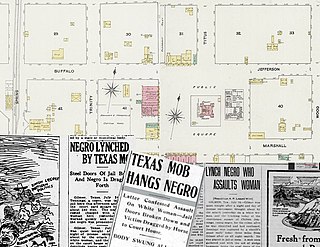
Chilton Jennings was lynched on July 24, 1919, after being accused of attacking a white woman, Mrs. Virgie Haggard in Gilmer, Texas.

George Meadows was an African American man who was lynched on January 15, 1889, in Jefferson County, Alabama, United States.
John Carter was an African-American man who was murdered in Little Rock, Arkansas, on May 4, 1927. Grabbed by a mob after another Black man had been apprehended for the alleged murder of a white girl, Carter was hanged from a telephone pole, shot, dragged through the streets, and then burned in the center of the city's Black part of town with materials that a white crowd of perhaps 5,000 people had looted from nearby stores and businesses.

William Baker was an 18-year-old African-American man who was lynched in Monroe County, Mississippi by a white mob on March 8, 1922. According to the United States Senate Committee on the Judiciary it was the 14th of 61 lynchings during 1922 in the United States.
















